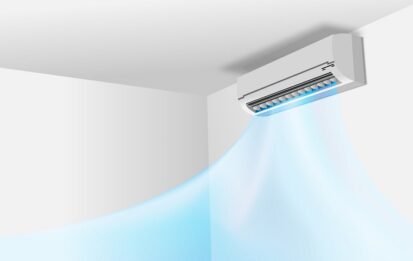COP (Coefficient of Performance)
The word COP (Coefficient of Performance) can be calculated as the proportion of generated heating, or cooling versus the volume of work to garner that heating or cooling. COP is widely used for the efficiency of heating as an index in air conditioning energy effiency. The possible explanation COP can be used as an index of HVAC performance and reliability is because, just like most other electronic devices. HVAC products are not energy converters that produce energy with the electricity they consume. HVAC systems are devices for energy transfer. So in some cases can exceed 100 percent efficiency without violating the thermodynamic laws.
This concept is feasible because the HVAC system’s rate of heat transfer may increase the energy requirement by the system. In a basic sense, if an HVAC unit generates 5 kW of heating from 1 kW of electricity. So, the COP of such a unit is 5.0. The larger a system’s COP, the higher its effectiveness for heating.

Air Conditioning EER (Energy Efficiency Ratio)
Moreover, the concept EER remains for the energy efficiency ratio. EER measure by the ratio of cooling load kWh to energy consumption kWh. We refer to its output capability when we talk about the size of an air conditioning system. If a 5kw system consumes 1.2kWh of electricity, the EER score of just that would be 4.17 (5/1.2). The whole index widely uses in a constant state to measure the cooling effectiveness. EER is vital to compare the efficiencies of systems without estimating external factors at face value. The calculation of this ratio takes place at the specific temperature of the interior (26 degrees C). The exterior temperature (35 degrees C), and humidity of 51% and 40%, respectively. The greater the EER, the excellent the unit; the range of given values is between 3 and 6. The higher EER is more energy efficient is the equipment in the cooling cycle.

In addition, While you probably enjoy getting a comfortable place to come home during the summer, you probably do not want the rise in energy costs every month. Choosing an energy-efficient air conditioning system will go a lengthy way towards lowering your monthly energy bills. If you have been considering buying a new A/C, then It’s necessary to know the efficiency rating you see on a different system to ensure that you get the most value for money. If you require further information then reach us out and Get the EER and COP scoop so that you can form an opinion that will help you find the A/C that will add value to your home comfortably while saving you money.
















